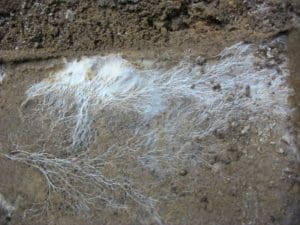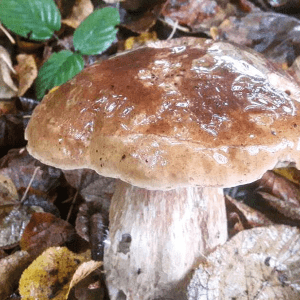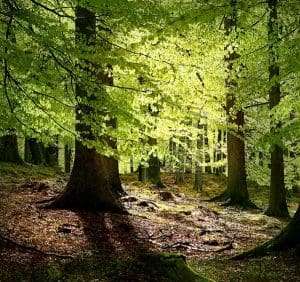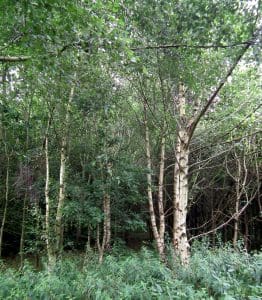The relationship between and fungi is a truly complex one, through this piece we’ll just scratch the surface.
When people think of fungi they often see them as destructive, appearing on stale bread, rotting fruit and vegetables and killing trees. But many fungi are actually beneficial to plants and trees, allowing them to reach resources that would be otherwise unavailable to them and also allowing them to communicate with each other. We call these species mycorrhizal fungi. The name comes from the Greek words myco meaning fungi and rhiza meaning root.
These fungi form symbiotic relationships with over 95% of plant species on earth.
The part of the fungus that we call a mushroom is really just the fruiting body of the organism, a way for it to spread its spores. The majority of the organism is underground in the form of mycelium, a continuously growing network of thread like filaments that dissolve and absorb nutrients from its environment. The fungus shares these nutrients with the plant in exchange for natural sugars that are produced by the plant through photosynthesis.

Here are some of the ways that mycorrhizal fungi help plants;
They help plants access water
Fungal networks can help plants access water by increasing the roots surface area by up to 1000x, allowing them to access water that would otherwise be out of their reach.
They help plants access nutrients
Fungal networks take up essential nutrients like phosphorus, copper, calcium, magnesium, zinc, and iron. Without these networks, plants can’t access the quantities of nutrients they need to thrive.
They help protect plants
Not all fungi are good, and some can harm plants. Mycorrhizal fungi, however, create protective webs around the roots of plants, blocking harmful fungi. They also block certain types of harmful bacteria from infecting the plant.
They help plants communicate
The fungal networks allow plants to communicate with each other and share information about droughts, insect attacks and other dangers.
Sometimes known as the Wood Wide web these networks connect different plants and trees together and it’s all happening just below our feet. It is thought that a single teaspoon of soil can contain up to 10km of mycelium.
Some of the most prized fungi such as Chanterelle and Porcini are mycorrhizal species and these species prefer to partner with particular trees. So learning how to identify trees is important if you want to get better at finding edible mushrooms. Trees are a lot easier to see from a distance than little brown mushrooms so they’ll point you to suitable places to look and knowing your trees is really important when trying to identify mushrooms as some only grow with particular trees.
In the UK the best trees for edible fungi are oak, beech, birch and pine so learning these trees will really improve your chances of finding and identifying mushrooms.
References and further reading:
https://www.newyorker.com/tech/annals-of-technology/the-secrets-of-the-wood-wide-web
https://en.wikipedia.org/wiki/Mycorrhiza
https://www.leaflimb.com/Mycorrhizal-Fungi-Unsung-Heroes-of-Tree-Care/








